![]()
Monday, September 23, 2013
The Al-Nusra Front (Jabhat al-Nusra) is an Al-Qaeda Salafist-jihadi network, prominent in the rebel organizations in Syria. It seeks to overthrow the Assad regime and establish an Islamic Caliphate in Greater Syria, a center for regional and international terrorism and subversion. This study, conducted by the Meir Amit Intelligence and Terrorism Information Center, focuses on the Al-Nusra Front, the most significant organization among the jihadist organizations operating in Syria. The study is structured in seven sections[*], which if read in conjunction with each other, draws a complete picture of the Al-Nusra Front.
Section Four
An overall description of foreign volunteers
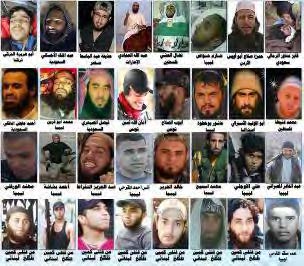
Photographs of 32 foreigners killed in the fighting in Syria, as they appeared on a Facebook page dedicated to foreigners fighting in Syria[29] (rightsidenews.com, April 24, 2013)
The Syrian civil war attracts Muslim volunteers from across the globe, similarly to volunteers who came to Afghanistan, Bosnia, and Iraq in previous decades. Most of them find their way into the Al-Nusra Front and other Salafist-jihadi organizations, while some join Islamic organizations that are considered more moderate, or even the Free Syrian Army. During their stay in Syria, in some cases, the volunteers defect and move from one military framework to another, which in many cases makes their affiliation hard to determine. The volunteers come from the Arab/Muslim world (particularly Middle Eastern countries), West European countries (mainly the U.K. and France), Muslim countries in Central Asia (notably Chechnya), and other countries across the globe where there are Muslim communities.
Analysis of the volunteers shows that they are a fairly heterogeneous population. Below is a breakdown of that population into several variables:
- Military skill: some of the volunteers (those coming from Libya, for instance) are fighters with combat experience gained in other military hotspots of Al-Qaeda and global jihad. A significant number of members in leadership positions are battle-hardened Al-Qaeda-affiliated Iraqi operatives who, as already mentioned, are part of the Al-Nusra Front’s founding core group. Other Al-Nusra Front members are Afghan and Chechen operatives from military backgrounds. Other volunteers, on the other hand, have no combat experience or military skills. They undergo “crash courses” in military skills, in Syria or in their countries of origin, and later on they gain practical experience in fighting the Syrian security forces.
- Motivation and ideology: some of the volunteers who have joined the ranks of the Al-Nusra Front and other Islamic organizations are driven by a Salafist-jihadi ideology with which they were inculcated by radical preachers in their home countries. Some of them are motivated by religious or sectarian considerations, meaning that they perceive the fight against the Syrian regime as a war waged by the Sunnis against the Shi’ites, thought to be plotting to take over the Arab world (concerns about the Shi’ites are fed by Hezbollah’s victory in the Al-Qusayr campaign and rumors about the use of chemical weapons). Other reasons for volunteering are a sense of adventure and the heroic image of the rebels (in the context of the regional upheaval) compared to the negative image of the Assad regime. In some cases the volunteers adopt a Salafist-jihadi ideology only after staying in Syria, where they undergo an accelerated process of “jihadization” and radicalization.

Foreign volunteers in Syria: on the right is a man dressed in typical Pakistani clothing, which has apparently become fashionable among foreign fighters in Syria (syriasurvey.blogspot.com, December 1, 2012). However, apparently there are only a few Pakistani operatives in Syria.
- Origin: most of the volunteers in the Al-Nusra Front and other rebel organizations come from Arab countries in the Middle East. As already mentioned, the organization’s core group is made up of Iraqi Al-Qaeda operatives (veterans of the war against the United States and its allies), as well as operatives from Libya, Tunisia, Saudi Arabia, and Egypt. Muslim volunteers from Chechnya (Russia) are prominently represented as well. The number of volunteers from West Europe is estimated at approximately 10 percent of all volunteers. Of particular note among them are Muslim volunteers from the U.K. and France. There is also a relatively small number of volunteers from other countries, including the U.S., Canada, Australia, as well as countries where there are Muslim communities (such as China).
- Age: some indication of the volunteers’ age can be found in a list of foreigners killed between September and November 2012 submitted by Syria to the U.N. Security Council (see below). The list provided a surprising figure about the age of the casualties (based on the age of the 51 operatives listed). Contrary to popular belief that it is mostly young people who volunteer for such wars, the average age of the operatives on the list is 39, relatively old when compared, for example, to the average age of the foreign fighters in Iraq (24). A considerable number of the casualties were married and had families (syriasurvey.blogspot.com, December 1, 2013).
The approximate number of foreign volunteers
It is difficult to provide a precise estimate of the number of foreign volunteers in the Al-Nusra Front and other rebel organizations or analyze their personal characteristics with any degree of precision. There are several reasons for that:
- Lack of systematic records: the foreign volunteers usually attempt to cover up the fact of their coming to Syria from their home countries to fight for the rebel organizations, let alone when it comes to the Al-Qaeda-affiliated Al-Nusra Front. The volunteers usually leave their own countries as individuals, come to countries bordering Syria (particularly Turkey) pretending to be tourists or visitors, and once there, illegally cross into Syria. The overall number of foreign operatives in Syria changes from time to time: some of the volunteers died in the fighting, others have remained in Syria, and others still have come back to their countries of origin to be replaced by new operatives. This makes it difficult to keep track of the volunteers. In some cases, the volunteers take on false identities using passports provided to them by the various rebel organizations.
- Secrecy: the Al-Nusra Front and the rest of the organizations, as well as the volunteers themselves, usually take pains not to make their true identities publicly known, using aliases or fake names. In many cases they do not inform their families about the real purpose of their trip (in some cases their families find out about their stay in Syria only after they are killed in the fighting). Al-Nusra Front operatives, including foreign volunteers, are suspicious and cautious in their dealings with Arab and Western media. The Al-Nusra Front disseminates media reports as part of the battle for hearts and minds; however, the information it releases is strictly controlled, has the tone of propaganda, and is intended to further the aims of the organization.
- The volunteers’ dispersal between various units: in most cases the volunteers are scattered among military networks operating in different geographic locations (with the exception of ethnic organic units, such as one consisting mostly of Chechen operatives). Each unit is a mixture of operatives from different countries.
- Transfer between organizations: in some cases the volunteers become members of the Al-Nusra Front. In others they become members of other organizations, such as the West-oriented Free Syrian Army, and then transfer to the Al-Nusra Front for any number of reasons (for instance, more attractive radical ideology, better salary and equipment, higher motivation and morale).
Because of these reasons, the only estimates that exist about the number of foreign operatives belonging to the Al-Nusra Front and other rebel organizations are approximate. Such estimates were calculated by research institutes in the U.S. and the U.K., as well as by researchers/experts and websites that follow the phenomenon of foreign volunteers. According to most estimates, there are now approximately 5,000 foreign operatives in Syria fighting against the Assad regime.[30] It is our assessment that there are about 500-600 operatives from Europe. Most of the foreigners belong to the Al-Nusra Front and their number is increasing. The following are two of the estimates:
- According to an article published on the Washington Institute website in July 2013, “about 5,000 Sunni fighters from more than 60 different countries have joined the Syrian rebels since the uprising began in 2011.” This figure, the article says, “makes Syria the second-largest foreign fighter destination in the history of modern Islamism.” The Afghan jihad drew approximately 10,000 volunteers in the 1980s but over a period of ten years, not in such a short time as the fighting in Syria. In addition, there are also foreigners fighting for the Syrian regime (Hezbollah operatives, Iranians, Iranian Revolutionary Guards, Iraqis, and Shi’ites). According to the author of the article, there is a good chance that the number of foreign operatives fighting either for or against the regime will exceed 10,000 fighters on either side of the war within a year or two (Thomas Hegghammer and Aaron Y. Zelin, “How Syria’s Civil War Became a Holy Crusade?”, July 7, 2013).
- A study carried out by the International Centre for the Study of Radicalization (ICSR) in the U.K. is based on an analysis of over 450 sources and Arab media, as well as the last wills of operatives posted on online message boards. According to the study, since the beginning of the conflict 2,000-5,500 foreign operatives have gone to Syria to fight against the Syrian regime. “Based on this total, the European share of this total represents 135-590 individuals, or 7-11 percent of the foreign fighter total.” The study goes on to say that the recruitment pace of Muslims across the globe is fast and can be compared to the conflicts in Iraq in the 2000s, Bosnia in the 1990s, and Afghanistan in the 1980s (Aaron Y. Zelin, ICSR, April 2, 2013).
The summer of 2013 marked an increase in the flow of foreign operatives to Syria. The main reason, in our assessment, was Hezbollah’s victory in the campaign for the Al-Qusayr region, which was perceived not only as an achievement for the Syrian regime but also as a victory of the Shi’a in the fight against the Sunna. The defeat in Al-Qusayr provoked strong reactions in the Sunni Muslim world. Sunni Shari’ah jurists, including Sheikh Yusuf al-Qaradawi, considered the Sunni Muslim world’s top authority on Islamic religious law, called on Muslim volunteers to go to Syria and help the jihad warriors there. It is our assessment that Al-Qaradawi and other jurists did not mean for the volunteers to join the ranks of the Al-Nusra Front but rather other Muslim rebel groups, particularly those affiliated with the Muslim Brotherhood. It is likely, however, that many volunteers eventually found their way into the Al-Nusra Front and other Salafist-jihadi groups, drawn by their superior ideological power of attraction and better organization and resources.
Foreign operatives killed in Syria
Many foreign volunteers were killed during the fighting in Syria. Their number remains unknown, and the estimates published vary wildly: according to recent figures released by the Syrian Observatory for Human Rights, 2,219 foreigners fighting for the rebels have been killed in Syria since the beginning of the conflict (www.newsobserver.com, June 7, 2013). According to a Facebook page documenting the foreign fighters in Syria, approximately 300 foreign operatives have been killed in Syria, most of them from Middle Eastern countries (as at April 2013). However, analysis of lists of foreign operatives killed in the fighting opens up an opportunity to learn about their geographic origin and in some cases makes it possible to gain information about their personal details (full name, occupation, age, ideological motivation, and more).
In late November 2012 the Syrian government submitted to the U.N. Security Council a list of 142 foreign fighters killed between September and November 2012. The Syrian government’s aim in doing so was to make the U.N. announce that the presence of foreign forces in Syria was tantamount to support for international terrorism (meanwhile, the media published photographs of Hezbollah operatives, who are in fact foreign fighters killed in Syria while fighting for the Syrian regime). The list submitted by the Syrians included operatives from 19 Arab/Muslim countries: Afghanistan, Algeria, Azerbaijan, Chad, Egypt, Iraq, Jordan, Kuwait, Lebanon, Libya, Pakistan, “Palestine”, Qatar, Saudi Arabia, Tunisia, Turkey, Yemen, and Chechnya (Russia). Saudi Arabs made up the majority of the operatives on the list, followed by Libyans. The list also contained the names of 11 Afghanis killed in northern Syria (syriasurvey.blogspot.com, December 1, 2013). The report did not include names of Western operatives or those from other countries in the world.
Operatives from the Arab-Muslim world
Overview
As already mentioned, the core group of the Al-Nusra Front is made up of Al-Qaeda operatives, veterans of the war against the United States and its allies in Iraq. They were joined by local Syrian jihad operatives. The organization was subsequently joined by many thousands of Arab/Muslim volunteers, a significant number of whom came from Libya, Tunisia, and Egypt, three Arab countries which had undergone revolutions during the regional upheaval. Operatives from Saudi Arabia and Muslims from Chechnya (Russia) are prominently represented as well. The following is a description of the foreign volunteers from a number of Arab/Muslim countries.
Libya
Libya is one of the most important sources of volunteers fighting against the Syrian regime. According to one estimate, over 20 percent of all volunteers from Arab countries are experienced fighters who formerly fought against the Muammar Gaddafi regime in Libya (www.rightsidenews.com, April 24, 2013). Some of them are of Libyan descent and others are foreigners, who fought against the Gaddafi regime and moved to Syria after that regime was toppled. It should be noted that not all Libyan volunteers joined the Al-Nusra Front — some of them fight within the ranks of the Free Syrian Army.
The Libyan recruits usually take a flight to Istanbul (Libyans do not require a visa to enter Turkey). Once there, they continue to the city of Antakya on a domestic flight and then travel overland to towns along the Turkish-Syrian border. The volunteers are usually assisted by Islamic networks and some of them have their trip to Syria paid by Islamic organizations (Der Spiegel, April 30, 2013).
Tunisia
Post-Jasmine Revolution Tunisia is notable for its considerable number of volunteers, starkly contrasting with the insignificant number of Tunisians in previous jihadi theaters of operations, such as Afghanistan and Iraq. The number of Tunisian operatives is estimated at approx. 16 percent of all foreign fighters. Jihadist groups in Tunisia suppressed by the previous regime are now free to preach jihad to recruit operatives for the fighting in Syria (flash-intel.com, June 2013).
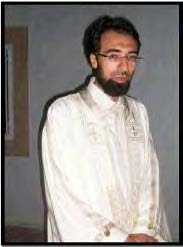
Muhammad Amin Abd al-Hadi, from Tunisia, was killed in an attack against the Syrian army on January 27, 2013. He worked at a telecommunications study and research center for ten years (flash-intel.com, June 2013).
Saudi Arabia
There are many Saudi volunteers fighting in Syria. Even though their number is not as considerable as it was in Iraq, they still play an important role in the war. They make up an approximate 15 percent of all Arab volunteers. Some of them have no combat experience, but a few have highly significant military experience (flashintel.com, June 2013).
Egypt
The number of operatives of Egyptian descent is estimated at approx. 10 percent of all Arab volunteers. Some of them have combat experience gained in other conflicts in the Middle East. One of them, Anas al-Masri (Abu Malek), was reportedly killed in Idlib on September 8, 2012 by a rocket. Before coming to Syria, Al-Masri fought alongside Al-Qaeda in Yemen under the banner of Ansar al-Shari’ah. Another Egyptian national killed in Syria in March 2013 is Muhammad Abd al-Hallaq, codenamed Abu Yahya al-Masri, who played a key role in a number of battles fought by the Al-Nusra Front and its supporters in the country’s northwest (flash-intel.com, June 2013). Another Egyptian killed in Syria is Issam Sarraj, from Alexandria.

Issam Sarraj, from Al-Ameria, near Alexandria. Killed when fighting for the Al-Nusra Front (youtube.com)
Palestinians
Among those who volunteered to join the ranks of the Al-Nusra Front are several dozen Palestinians. On February 17, 2013, Abu al-Ghanaa al-Ansari, a high-ranking member of a Salafist-jihadi group in the Gaza Strip, said that 20 to 30 youngsters had gone from the Gaza Strip to Syria to take part in the fighting alongside such global jihad groups as the Al-Nusra Front. These are mostly young people belonging to Salafist groups in the Gaza Strip that were persecuted by the security services of the de-facto Hamas administration (Al-Quds, February 17, 2013).
According to a report released by German news agency DPA on March 18, 2013, dozens of Salafist-jihadi operatives had come to Syria from the Gaza Strip via Turkey, some of them former Hamas operatives. They joined jihadi groups fighting against the Syrian regime, particularly the Al-Nusra Front (wattan.tv). There are also several volunteers from Palestinian communities in Syria and Jordan, as well as some from Judea and Samaria.
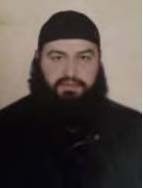
Imad al-Natour (Abu Ihsan), a volunteer from Jordan, perhaps of Palestinian descent (Al-Natour is a common Palestinian last name). He was killed in an attack carried out by the Al-Nusra Front (ict.org.il).
Israeli Arabs
Israeli Arabs joining the rebel groups is a well-known phenomenon. It is not, however, particularly widespread. According to several estimates, there are about 15-20 Israeli Arabs who joined the rebels in Syria, mainly the Al-Nusra Front (Israeli daily Haaretz, September 23, 2013). Nevertheless, the Israel Security Agency (ISA) considers Israeli Arabs joining the rebels in Syria as “a highly dangerous phenomenon” given the existence of elements that are hostile to Israel in the Syrian theater of operations, particularly global jihad operatives. Israeli Arabs who joined the rebels in Syria are exposed to radical anti-Israeli ideology and may be exploited by terrorist elements both as a source of information and as perpetrators of terrorist attacks against Israel (ISA website, August 21, 2013).
The following are details on two volunteers who went to Syria to fight for global jihad groups (ISA website, August 21, 2013):
- On July 14, 2013, the ISA and the Israeli police detained Abd al-Qader Afif Abd al-Qader al-Tilah, 26, from Taybeh, who had studied pharmacy in Jordan and went to Syria to join the ranks of the rebels. During his studies Al-Tilah became acquainted with students who supported the Salafist jihadi school of thought, an ideology which he embraced due to their influence. On his arrival to Syria he joined the Al-Nusra Front. On August 9, 2013, charges were filed against him in an Israeli court for several counts.
- On March 19, 2013, the ISA and the Israeli police detained Hikmat Othman Hussein Masarwa, 29, from Taybeh. His interrogation by the ISA showed that he had gone to Syria to take part in the fighting alongside global jihad operatives. He also intended to locate his brother, Hussein, who had gone to Syria several months prior to that for the same purpose. While in Syria he underwent military training at a rebel camp. He was also offered to carry out a suicide bombing attack against Syrian regime forces, which he refused. He was also asked to carry out a terrorist attack in Israel, but claimed that he refused that request as well. In addition, he was debriefed about Israel and the IDF. Hikmat Masarwa was sentenced to 30 months in prison (Israeli daily Haaretz, April 10, 2013; Reuters, July 8, 2013).
According to Israeli media reports on September 18, 2013, an Israeli Arab named Muayed Zaki Agbariya, from the village of Mashrafeh, died while fighting for militias affiliated with Al-Qaeda. Agbariya, 28, an orthodox Muslim, left Israel with two of his friends, young men from the city of Umm al-Fahm. He arrived in Syria via Turkey. (Israeli daily Yedioth Ahronoth and ynet, September 18, 2013; Israeli daily Haaretz, September 23, 2013).
Chechnya
Some of the foreign operatives in the Al-Nusra Front (and other jihadi organizations) are volunteers who came from North Caucasus and Central Asian countries, particularly Chechen volunteers. They are notable for their high number, combat experience, considerable motivation, and their belonging to an organic Chechen unit (unlike most foreign volunteers, who are scattered among the military frameworks of the Al-Nusra Front and other rebel organizations). According to Syrian opposition sources, the Chechens are the second largest foreign force fighting for the rebels after the Libyans. This is probably the first time that Chechen jihadists are fighting outside their own country. It can be assumed that most of the Chechen operatives took part in the 15-year insurgency against Russia and have extensive combat experience. Their coming from Chechnya to Syria was sponsored by Islamic elements in Qatar and Saudi Arabia (worldtribune.com, March 27, 2013).
Evidence of Chechen fighters’ involvement in the Syrian civil war first appeared in August 2012, when reports surfaced that Rustam Gelayev, the son of Hamzat Gelayev, one of the leaders of the Chechen insurgency, was killed during the fighting in Syria. The Chechen fighters formed their own unit, the Muhajiroun, headed by “Abu Omar of Chechnya” (www.rightsidenews.com, April 24, 2013). The unit fights alongside the Al-Nusra Front forces and also has operatives from Libya, Tajikistan, Turkey, Jordan, and Saudi Arabia (www.rferl.org, June 19, 2013). The Chechen operatives number approximately 100 people, at least 17 of whom were killed in combat in the Aleppo region in February 2013.
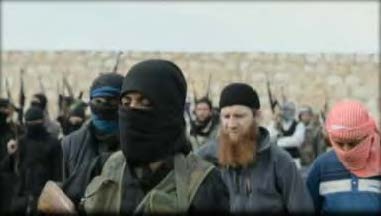
A unit of foreign fighters consisting mostly of Chechen operatives (channel4.com, June 14, 2013). At the center, with a reddish beard, is “Abu Omar of Chechnya”.
The Chechen unit created a dedicated website to document the unit’s fighters in combat, commemorate its fallen members, and help those interested in joining the Chechen unit.
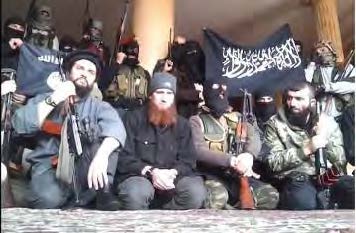
“Abu Omar of Chechnya” (center, with a reddish beard) and other Chechen fighters in Syria. Jihadist flags can be seen in the background (longwarjournal.org, February 20, 2013).
The Chechen authorities apparently find it difficult to deal with the phenomenon. At first they denied that there were Chechens fighting in Syria. However, eventually they did admit to its existence but attempted to play it down. On several occasions, the authorities admitted that Chechen operatives as well as operatives from Chechen immigrant communities in Europe and Turkey were coming to Syria to fight. According to the authorities, they came from low-income families or were victims of attempts by Western intelligence agencies to recruit fighters through jihad warriors’ websites. In the second half of May 2013 Chechnya’s leader Kadyrov argued that only a few European Chechens were killed in the fighting (www.rferl.org, June 19, 2013).
Some have criticized the active participation of Chechens in the fighting against the Syrian regime. In October 2012 Doku Umarov, the leader of the Chechen insurgents in North Caucasus, reprimanded the Chechens fighting in Syria. He said that he considered Bashar Assad an enemy and a dictator, stating that the fighters of North Caucasus prayed for the victory of the Syrian rebels. He added, however, that he could not pray for those who would trade the Assad regime for one with pro-Western leanings. He also argued that some of the Chechens fighting in Syria did not recognize the jihad waged in Chechnya (chechen.org, November 30, 2012).
Volunteers from the West
Europe
European volunteers are particularly prominent among the foreigners in the Al-Nusra Front and other rebel organizations. We estimate their number at 500-600 operatives. The U.K.-based ICSR estimates their number at 140 to 600, comprising 7 to 11 percent of all foreign operatives fighting in Syria. On the other hand, the U.S. Gatestone Institute estimates the number of European volunteers at nearly 1,000. The two institutes believe that the volunteers come from over 15 countries (Aaron Y. Zelim, icsr.info, April 2, 2013). Some of the volunteers are sent from their countries to Syria by networks of jihadists and radical Muslims that operate in Europe.
U.K and French nationals are prominent among the Muslim volunteers from Europe. A report published in the British daily The Independent argued that more than one hundred British nationals were in Syria. The French Le Figaro estimated that 50 to 80 volunteers came to Syria from France. According to another estimate, there are about 200 volunteers from France. Der Spiegel reported on several dozen German volunteers. According to another estimate (from July 2013), there are about 70 German operatives, radical Muslims, who left for Syria (investigative.project.org, September 6, 2013). The Danish media reported on approximately 40 Danes. The Dutch authorities raised their terror threat level based on an estimate that approximately one hundred Dutch citizens went to Syria (Aaron Y. Zelin, icsr.info, April 2, 2013).
Most of the Europeans who joined the fighting are Muslims, but some of them are converts to Islam. Few of them have any links to Syria (such as relatives or acquaintances). Some of them are fighting for the first time, while others have previous combat experience gained in Iraq or Afghanistan. European youngsters come to Syria for various motives: some of them have been influenced by the radical teachings of global jihad organizations and are driven by the belief that their fellow Sunni Muslims are being murdered by the Assad regime. Others are looking for adventures or seek different kinds of thrills (cbsnews.com, April 30, 2013).
Whatever the volunteers’ motives may be, the phenomenon of young people from Western countries, particularly such West European countries as the U.K. and France, coming to fight in Syria is hardly a surprise. Muslims from European countries have fought on practically every jihadist front since the Afghanistan War in the 1970s. Those who volunteer belong to the second generation of Muslim immigrant communities in Europe, who are brought up as members of a community distinct from its environment — a community that is also a hotbed for radical preachers who disseminate jihadist ideas and radicalize the youth. Another factor of influence is the jihadist preaching on the internet and other media. Such radicalization, combined with the passive reaction of the Western governments to what is happening in Syria, motivate these youngsters to volunteer to fight against the Assad regime in Syria (www.ctc.usma.edu, February 20, 2013).
What is the significance of volunteering to join the Al-Nusra Front and other Islamist organizations? Looking at the phenomenon’s extent and taking into consideration the size of the Muslim population living in Europe, it is a marginal issue — at least for the time being. However, great importance may be attributed to the concerns that, when the operatives come back to their countries of origin having undergone military training and a process of radicalization in Syria, they will potentially engage in radical Islamic activity or even carry out terrorist attacks in those countries (as per the “Afghanistan model”).
Such concerns have given rise to an internal discourse in European countries on ways of dealing with the phenomenon of European Muslims volunteering to join the fighting in Syria. There is an approach that law enforcement authorities should not be involved in preventing youngsters from going to Syria. Some have argued that their desire to fight in Syria is a result of the difficult social and economic situation faced by the Muslim communities, which needs to be addressed first.
At any rate, the possibility of effectively dealing with the phenomenon is limited, since the rebel organizations fighting in Syria are not designated as terrorist organizations in Europe (with the exception of the Al-Nusra Front, in some countries). Accordingly, volunteering to fight in Syria is not a crime in the volunteers’ countries of origin, and at times it even resonates with the calls heard in Europe to topple the Assad regime. In a number of instances, however, there have been local attempts to stop the volunteers from going to Syria: for instance, public figures from the Muslim community have been asked by the authorities to convince those volunteers not to go. Social networks have been used as well. In addition, steps are taken against activists and institutions recruiting such volunteers. Still, such efforts seem to be insufficient, seeing as the phenomenon still persists.
Volunteers from Europe[31]
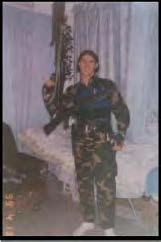
Nu’man Demolli, codenamed Abu A’isha, from Kosovo, fought in the Kosovo Liberation Army in 1999. Headed an Al-Nusra Front commando unit. Killed on August 12, 2012.
The U.S. and Canada
Several U.S. and Canadian citizens have joined the Al-Nusra Front and other rebel organizations; however, their number remains small. The concern of the U.S. security services is that these operatives, who may have undergone a process of jihadization and radicalization and gained combat experience in Syria, may be involved in terrorist activities when they come back to their home countries.
According to available information, two American volunteers have been killed in Syria thus far: Amir Farouk Ibrahim, 32, who fought for the Islamic State in Iraq and Greater Syria (an Al-Qaeda affiliated organization in Syria that competes with the Al-Nusra Front). He died in a battle between that organization and Kurdish militias on July 22, 2013. Found next to his body was his Egyptian passport (he had been living in Cairo for some time prior to his death) as well as the passports of about twelve people from the Muslim world. Amir Farouk Ibrahim is the second American killed in the Syrian civil war. The first was Nicole Lynn Mansfield, an American who converted to Islam and was killed in May 2013 (The Investigative Project on Terrorism, July 29, 2013).
On July 28, 2013, The New York Times reported that 12 U.S. citizens had joined the fighting in Syria up to that time (The Investigative Project on Terrorism, July 29, 2013). Dealing with the phenomenon is easier in the U.S. than it is in Europe, since the Al-Nusra Front is designated as a terrorist organization by the Americans. Nevertheless, the U.S. supports the Free Syrian Army and other rebel organizations and is hostile to the Bashar Assad regime, which means that joining the rebels should not be a criminal offense as far as U.S. law is concerned. In practice, the situation is more complicated, proof of which is the case of Eric Harroun.
Eric Harroun, 30, from Phoenix, Arizona, is a former U.S. army soldier who fought alongside the Al-Nusra Front. He was detained upon his return to the U.S. after posting a YouTube video from the front line. Eric Harroun told FBI investigators that he had shot ten people during his military activity in Syria in January-March 2013, but was not sure whether he had killed any of them. It was reported that, according to the testimony of an FBI investigator, Harroun joined the Free Syrian Army in January 2013 after crossing the Turkish-Syrian border. A few days after his arrival in Syria he found himself in a battle jointly fought by the rebels and the Al-Nusra Front. After the battle he joined the Al-Nusra Front (timesofisrael.com, April 8, 2013). Eric Harroun is currently facing trial in the U.S. on charges of fighting alongside the Al-Nusra Front, designated as a terrorist organization by the U.S. administration.
Al-Nusra Front recruitment and training
The Al-Nusra Front has a selective recruitment policy that differs from that used by the Free Syrian Army and other rebel groups. Whereas anyone can join the Free Syrian Army and carry a weapon after a brief training period, the Al-Nusra Front and other jihadist organizations have stricter admission standards. They examine the volunteers’ background, their motivation, and the strength of their Salafist-jihadi faith (As-Safir, July 31, 2013).
According to a high-ranking Al-Nusra Front operative in Aleppo, the organization puts new recruits through a 10-day religious training course to see how religiously committed they are. The recruits then undergo military training that lasts 15 to 20 days. “We put an emphasis on the single fighter,” the high-ranking operative said. “We care about quality, not quantity” (telegraph.co.uk).
New recruits are required to swear an oath of allegiance (Bay’a) to the organization and its commanders, a practice commonly employed by other jihadist groups. The religious nature of the oath makes for a stronger, more personal contract between the recruit and the Al-Nusra Front. Those who break the oath take a considerable risk and may even be killed. “The religious basis of this oath means that recruits have no legal recourse should they wish to leave the group, as they have made a vow to submit to jihadist leaders entirely, unless their instructions go against the will of God” (quilliamfoundation.org).
Training new Al-Nusra Front recruits
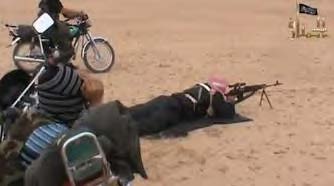
Firing a machinegun with a telescopic lens used in sniper rifles. Near the shooter are several motorcyclists (youtube.com). The organization apparently uses motorcycles as an effective means of transportation for guerilla and terrorism.
Indoctrination/Brainwashing and military training for children and adolescents[32]
The Al-Nusra Front and its competitor the Islamic State in Iraq and Greater Syria indoctrinate children and adolescents with the goal of inculcating them with the values of jihadist ideology as espoused by Al-Qaeda, and bringing up a new generation of jihadist operatives in Syria. Such exploitation of children and adolescents for the advancement of the organization’s purposes is also commonly practiced by Hamas, the Palestinian Islamic Jihad, and other terrorist organizations.
The Islamic State in Iraq and Greater Syria also works with elementary school children in northern Syria. Photographs of such activities were posted on jihadist forums in early September 2013. Photographs taken in Aleppo showed children holding Islamic State flags and a girl carrying a schoolbag with the organization’s logo (for details, see MEMRI report no. 5439, September 9, 2013). Other photographs documented religious activity among children in the city of Al-Tabqa (Policy Watch, September 10, 2013).
As part of their indoctrination, children and adolescents are trained in the use of weapons. We have no definitive information on whether the Al-Nusra Front has children and adolescents take part in the actual fighting. The Human Rights Watch interviewed children aged 14 to 16 who said that they had taken part in the fighting in Homs, Daraa, and Idlib. The teenagers said that they had been trained in firing rifles and throwing grenades, and that they had taken part in battles and operations against the Syrian army (nrg.co.il).
Children praise the Al-Nusra Front and its leader Abu Muhammad al-Julani
Children undergo military training in the Al-Nusra Front
Children practice at a training camp of the Islamic State in Iraq and Greater Syria
The following are photographs of masked children at a training camp of the Islamic State in Iraq and Greater Syria (courtesy of MEMRI). The training camp is situated in Abu Kamal, eastern Syria, near the Syrian-Iraqi border. The training camp is called Lion Cubs of the Caliphate (Ashbal al-Khilafah). The children featured on the photographs also delivered a message about the organization’s strategic objective: the establishment of an Islamic caliphate in Greater Syria.
[*] Read the other sections here:
![]()
Notes:
[29] While these are not necessarily Al-Nusra Front operatives, it can be assumed that most of the foreign volunteers who appear in the photograph belonged to the Al-Nusra Front or to other Salafist-jihadi organizations.
[30] Syria’s President Bashar al-Assad claimed in an interview to CBS on September 10, 2013 that there are tens of thousands fighting against the Syrian regime. He also claimed that most of the rebels are affiliated with Al-Qaeda. We believe that the Syrian president deliberately exaggerates the number of the foreigners and the Al-Qaeda affiliated operatives, seeking to increase concerns about them in the U.S. and the West.
[31] We are unable to determine whether these volunteers fought alongside the Al-Nusra Front or other rebel organizations. It is our assessment that most of the European volunteers joined the Al-Nusra Front and other Salafist-jihadi organizations, or transferred to such organizations after some time. Most of the photographs are of volunteers who died in Syria; a small number are of operatives who are still alive (as at the summer of 2013).
[32] A video posted on YouTube shows women fighters in veils (May 8, 2013). Our examination has shown that the women belong to Islamic groups other than the Al-Nusra Front.



 RSS
RSS


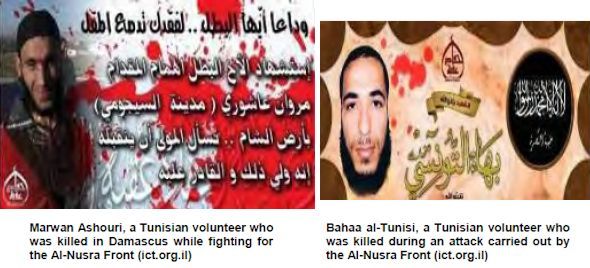

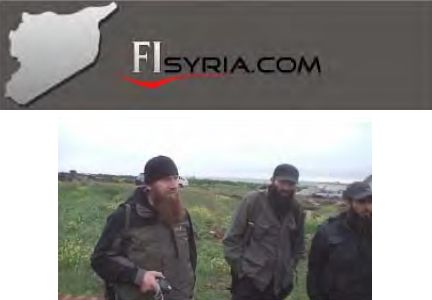

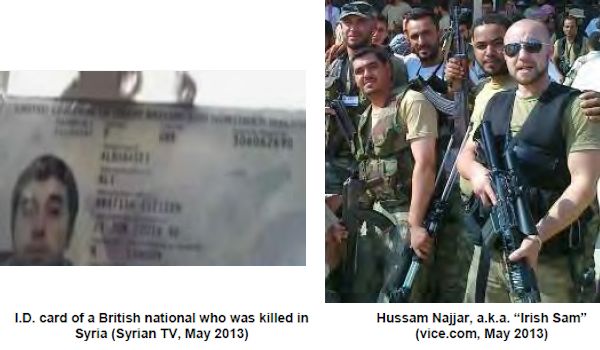

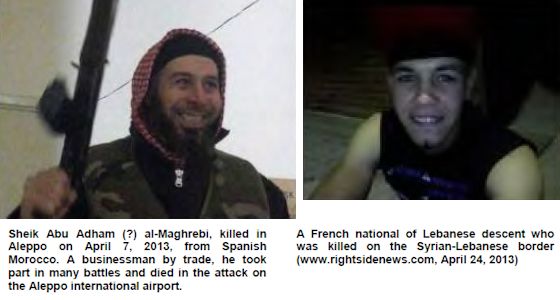


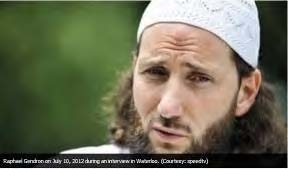




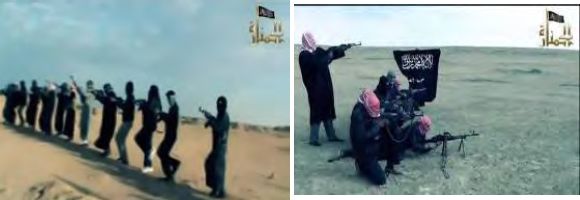
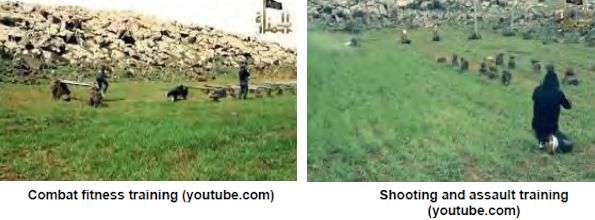


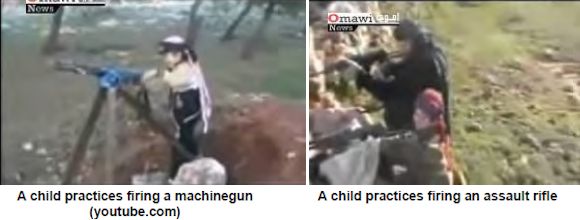

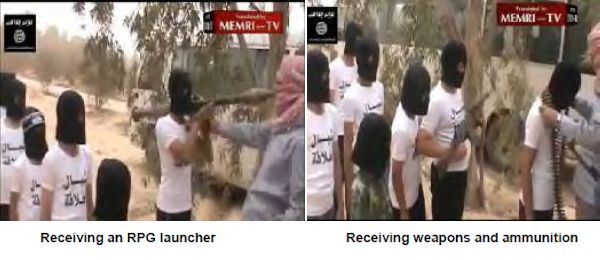
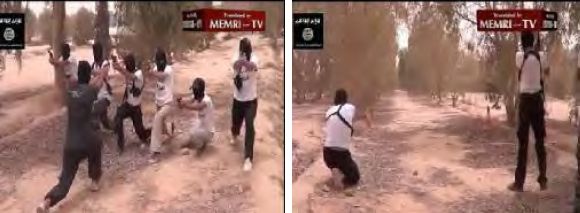
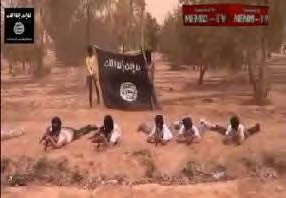


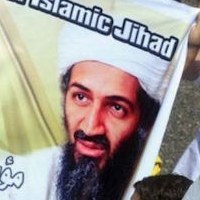

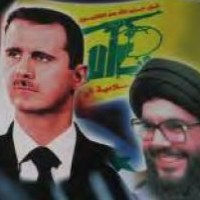





Latest Comments
Hello Mike, Thank you for your positive feedback to the article. I felt there wasn’t too much critical analysis of ...
Thanks for this considered and well constructed article. A follow up article on the manner in which the editorial contro...
THE CLUELESSNESS OF CLAIMING THAT OBAMA'S MIDDLE EAST POLICIES WERE A FAILURE CANNOT BE FURTHER FROM THE TRUTH, WHAT THE...
As long as Obama is the president of the usa do not trust the us government......
Thank you for an good read....